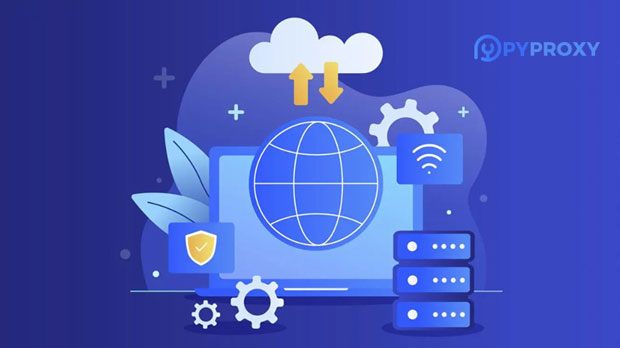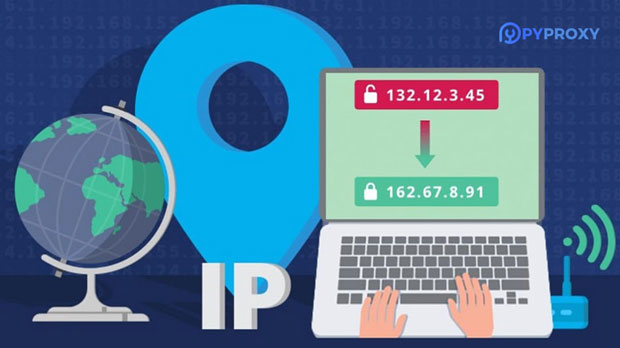A Practical Approach to Web Site Performance Monitoring Using Server Proxy IPs
Website performance monitoring is a crucial aspect of maintaining an optimal user experience, improving search engine rankings, and ensuring overall service reliability. One effective method for gathering performance data from various global locations is by using server proxy ips. These proxies allow for the simulation of real-world browsing conditions by providing different geographical perspectives. By doing so, businesses can monitor the performance of their websites from diverse locations, ensuring that their content is accessible, fast, and functional for users across the globe. This article will explore practical methods for monitoring website performance with the use of server proxy ips, outlining the tools, processes, and benefits that this strategy offers. The Importance of Website Performance MonitoringWebsite performance can significantly influence a user’s experience and, consequently, the success of a business. Slow loading times, downtime, or poor responsiveness can drive visitors away, affecting conversion rates and damaging brand reputation. On the other hand, websites that load quickly and offer smooth navigation provide a better user experience and can contribute to increased traffic, improved rankings, and higher customer satisfaction.The challenge, however, is that users access websites from various locations, devices, and networks, all of which can influence performance. Therefore, it is essential to monitor how a website performs from multiple geographies to get an accurate view of its performance.How Server proxy ips Facilitate Global MonitoringServer proxy IPs serve as intermediaries between a client and a website. By routing web traffic through these proxy servers, businesses can simulate how their site performs from different locations around the world. Server proxies can be used to mask the actual origin of a request and make it appear as though the request is coming from a different region or country.This allows businesses to monitor how their website responds in various environments, especially considering that performance can vary greatly based on factors such as location, network conditions, and server configurations. Server proxy IPs provide a valuable tool for businesses to gain insights into their website's performance from a global perspective, ensuring that users worldwide enjoy a consistent and optimal experience.Steps for Using Server Proxy IPs for Website Performance MonitoringTo make the most out of using server proxy IPs for website performance monitoring, several steps should be followed. These steps ensure accurate and actionable data for businesses to optimize their websites and improve the overall user experience.1. Choose a Variety of Proxy ServersTo begin, businesses should choose proxy servers located in various geographical regions. The location of proxies can significantly impact the data collected, as users from different countries may experience different loading times or even encounter content restrictions.For example, businesses should consider using proxies in high-traffic regions such as North America, Europe, Asia, and emerging markets. This ensures that they monitor performance from a diverse range of network conditions and gain valuable insights into how their website functions in these areas.2. Set Up Monitoring ToolsOnce proxies have been selected, the next step is to set up performance monitoring tools that can track metrics such as page load time, server response time, and content availability. These tools can simulate real user interactions with the website by utilizing the chosen proxy servers to access the website from different locations.There are various performance monitoring tools available, some of which support multiple proxy locations for international website testing. These tools also offer detailed reports on website performance, making it easier for businesses to identify performance bottlenecks, such as slow server response times or issues with content delivery.3. Perform Real-Time TestingAfter setting up monitoring tools and selecting proxies, businesses should conduct real-time testing to simulate user interactions from various locations. Real-time testing allows businesses to identify how their website performs under different conditions, such as varying internet speeds, different time zones, and regional traffic patterns.By analyzing this data, businesses can identify specific performance issues that may arise in certain regions, such as slow loading times due to distance from the server or network congestion during peak hours. The goal is to understand how the website behaves in different environments and optimize the website for all users, regardless of location.4. Analyze the Results and Take ActionOnce data is collected, businesses should carefully analyze the results to identify areas of improvement. Common performance issues may include slow page loading times, broken images or links, server errors, or issues related to content delivery networks (CDNs). By using server proxy IPs for testing, businesses can pinpoint the regions where performance issues are most prevalent and take corrective actions.Some strategies for improving website performance include optimizing images and other media files, reducing server response times, using content delivery networks to cache content closer to users, and eliminating unnecessary third-party scripts that may slow down the website.Benefits of Using Server Proxy IPs for Website Performance MonitoringThe use of server proxy IPs for website performance monitoring provides several significant advantages for businesses looking to optimize their websites.1. Global Performance InsightsThe primary benefit of using server proxy IPs is the ability to gain performance insights from a global perspective. By monitoring how the website performs from various locations, businesses can identify issues that may not be visible when testing only from a single region. This global approach helps businesses ensure that users in all regions have a consistent and fast experience.2. Accurate Testing Under Real-World ConditionsServer proxy IPs allow businesses to simulate real-world user conditions by accessing their website from different locations with varying internet speeds, devices, and network types. This helps businesses test how their website performs under real conditions, rather than relying on artificial test environments. As a result, businesses can ensure that their website meets the needs of real users.3. Improved Website OptimizationBy identifying performance issues through the use of server proxy IPs, businesses can implement targeted optimizations to improve website speed, accessibility, and overall functionality. This leads to a better user experience, higher user retention, and improved SEO rankings, as search engines prioritize fast, user-friendly websites.4. Proactive Issue DetectionUsing server proxy IPs for website performance monitoring also allows businesses to detect issues before they negatively impact users. By continuously monitoring performance from multiple locations, businesses can spot and fix problems early, preventing widespread issues and minimizing downtime.ConclusionMonitoring website performance using server proxy IPs is a practical and valuable method for businesses seeking to optimize their websites and improve user experiences. By simulating user interactions from different global locations, businesses can gain valuable insights into how their website performs in diverse environments. This enables businesses to take proactive steps to improve performance, identify issues, and optimize their websites for users around the world. By following the steps outlined in this article, businesses can ensure that their websites are accessible, fast, and responsive, no matter where their users are located.
2025-01-23
























































